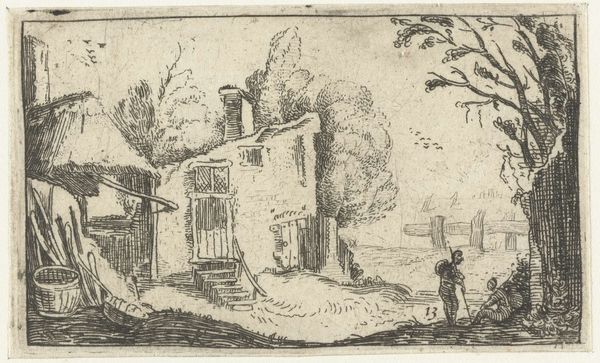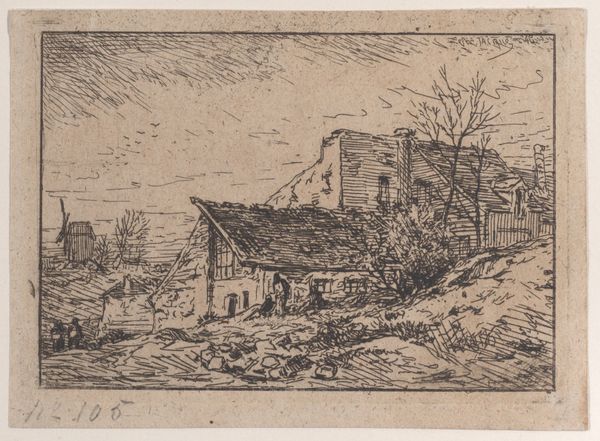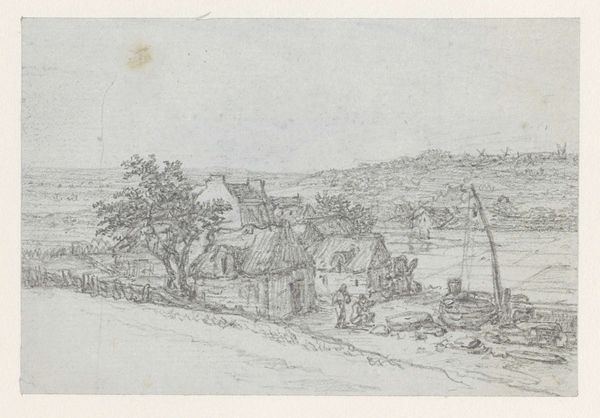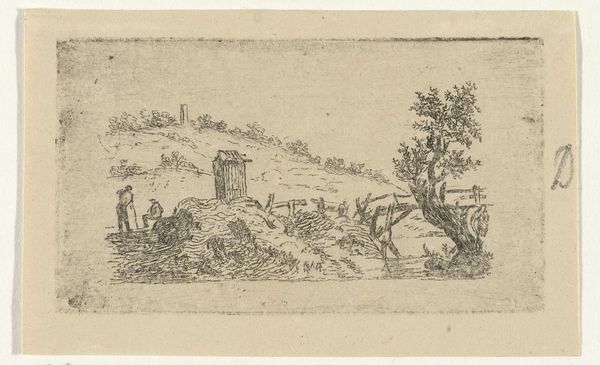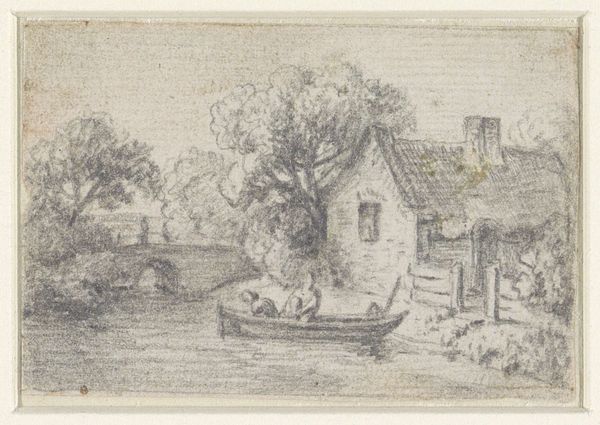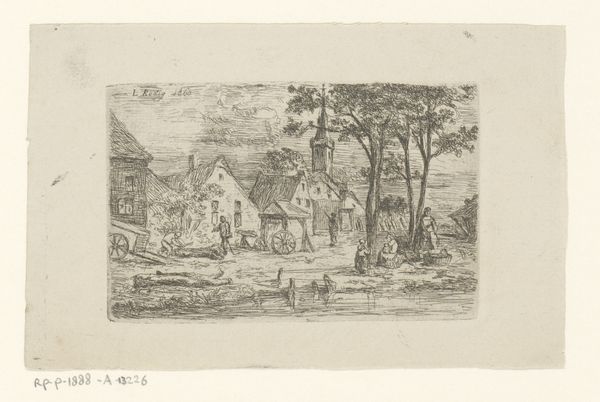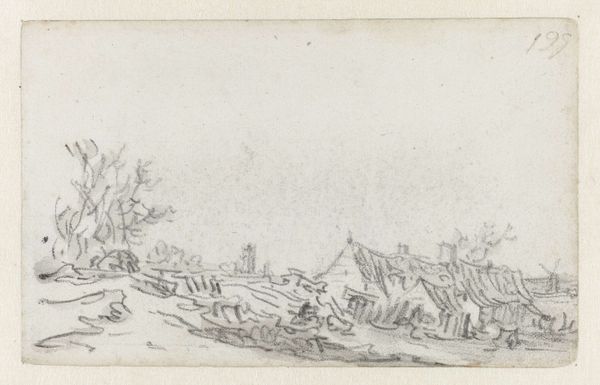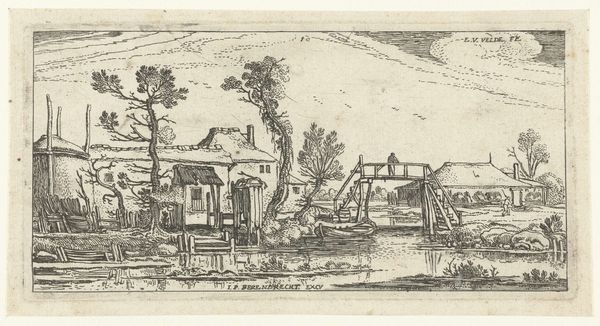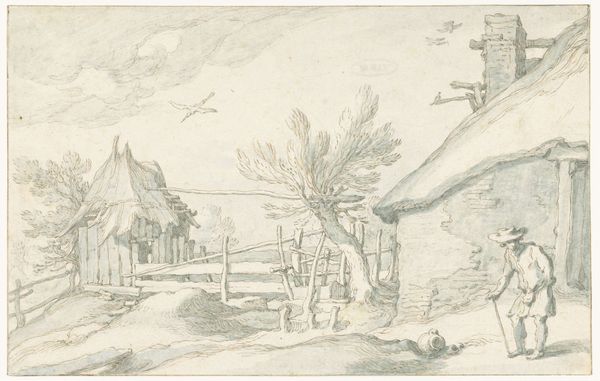
drawing, paper, ink
#
drawing
#
pen sketch
#
landscape
#
paper
#
ink
#
genre-painting
Dimensions: height 42 mm, width 75 mm
Copyright: Rijks Museum: Open Domain
Curator: Before us, we have “Dorp,” a pen and ink drawing on paper, created sometime between 1796 and 1856 by Reinierus Albertus Ludovicus baron van Isendoorn à Blois. It seems to be in the style of landscape genre-painting. Editor: It looks…rustic. Almost painfully so. The dwellings appear ramshackle. It conveys a sense of hard labor and the simplicity—or perhaps starkness—of rural life. Curator: Considering the time period, we can understand the work as potentially offering commentary on class and labor relations. These aren’t romanticized peasants; the buildings look like they are about to crumble and collapse! Editor: Absolutely, and that's where the medium matters so much. The use of pen and ink – basic, readily available materials – speak to the everyday reality it depicts. It suggests a kind of groundedness, a deliberate rejection of fancier artistic displays. I notice the marks: see how thin, frail, almost transient they seem? That surely communicates something about material precarity. Curator: It could also be considered a critique of the prevailing social order. If we understand the dilapidated setting as reflective of social neglect, then the artist implicitly questions the structures that allow such disparity to persist. It suggests that not all are prospering under this order and questions whether such suffering is inevitable. Editor: I agree. Think too, of the physical act of drawing. It's not oil paint, it’s a modest drawing: easily transported, easily shared. The materiality almost democratizes the scene, giving the land and labor a presence detached from elite ownership and consumption. I appreciate the roughness in these ink lines too, their imperfection underscores human toil. Curator: Indeed. Viewed through a contemporary lens, the drawing compels us to consider the relationship between marginalized communities and resource distribution throughout history. It invites critical assessment of societal progress: Has the quality of life improved for these same populations? The image prompts ethical introspection and activism. Editor: The bare minimum is visualized by the materials here; the sheer basic, raw, unsentimental nature of it all is clear to the viewer because the process speaks directly to us. Curator: "Dorp" makes us ask some pretty complex questions, all from what seems a relatively straightforward landscape! Editor: Absolutely; it's in that simplicity where true understanding emerges. The image almost acts as an instruction. Look closely!
Comments
No comments
Be the first to comment and join the conversation on the ultimate creative platform.

